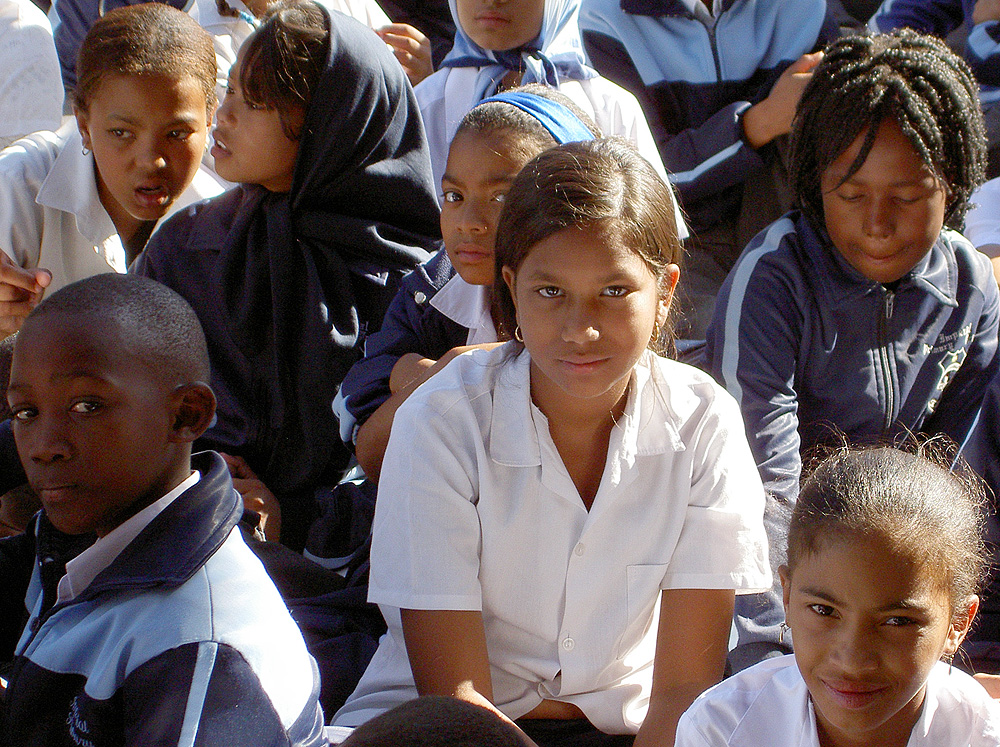Researching the politics of development
Blog

Active citizenship when bureaucracies are weak – some school-level lessons from South Africa

16 May 2017
Dr Brian Levy
Bureaucracies, we have learned, are embedded in politics. How, then, to strengthen public services in messy democracies? In settings where public hierarchies are weak, can participatory governance provide an alternative entry point? Recent results from an ESID research project I have been leading on the politics and governance of basic education in South Africa suggest an intriguing answer.
South Africa’s Eastern Cape province provides an ideal setting for exploring these questions. As the ESID approach underscores, two sets of variables that have a powerful influence on bureaucracies are: (i) the inherited institutional legacy, and (ii) how elites interact with one another. On both counts, as the ESID working paper, ‘The governance of basic education in the Eastern Cape‘, by Zukiswa Kota, Monica Hendricks, Eric Matambo and Vinothan Naidoo, details, the Eastern Cape scores badly. The province’s bureaucracy is a patchwork, built largely around two patronage-riven structures inherited from the apartheid era. Electorally, the ANC was dominant – but in practice it comprised an overall umbrella under which inter-elite conflict was endemic.
The combination of elite fragmentation and a personalised bureaucratic legacy left the Eastern Cape’s Department of Education (ECDoE) bedevilled by divergent and competing regional interests, organisational cultures and patronage ties. The national government tried to intervene, and for a few years it temporarily took over administration of the ECDoE. But this did not stem the crisis. Provincial politics proved too powerful. After a few years, intervention was scaled back, having had only limited impact on the crisis.
This brings us to the question of whether, in weak governance settings, participatory governance could be an alternative entry point. The 1996 South African Schools Act delegates authority both to provinces and to school governing bodies (SGBs) in which the majority of positions are held by parents. In principle, this governance framework creates the potential for horizontal governance to serve as at least a partial institutional substitute for weaknesses in hierarchies. To explore this possibility, in a second ESID working paper (‘School governance in a fragmented political and bureaucratic environment‘), Lawule Shumane and I explore in depth how governance played out over time in four schools in the Eastern Cape’s Butterworth district. In two of the four cases, participatory school-level governance turned out to provide a useful platform for pushing back against bureaucratic dysfunction.
In the first case, the school-level institutional culture was one where all stakeholders – teachers, the SGB, the extended community – felt included. This inclusive culture provided a powerful platform for managing the recruitment of teachers (and, when the time came for leadership succession, of the school principal) in a way that assured a continuing commitment to the educational mission of the school. One interviewee illustrated how this participatory culture operated, with the example of how new staff are inducted into the school’s organisational culture:
“The principal will call newly appointed staff to a meeting and introduce them to everyone. At this meeting the principal will welcome the new staff member to the team and inform them on school culture…. he will often say ‘Mr. or Ms. so and so, at this school we are a family and if we have problems we deal with them openly. If there is unrest, we will know it is you because it has never happened before’.”
The second case is more ambiguous. The principal who set in motion the school’s long decline was appointed in the late-1980s, and remained in the post for over two decades. In the latter-1990s, she purchased and moved to a home in a coastal town 100 kilometres away. From then on, using one pretext or another, she was, for much of the time, an absentee principal. This continued for about a decade (!!!) The school went into a downward spiral, with the number of students falling from close to 1,000 in the early 1990s, to a low of 341 in 2011.
In 2009, frustration at the principal’s continuing absence finally boiled over. A group of parents and some SGB members met, and jointly reached the view that a new principal was needed. The ECDoE district office was not supportive. In response, the parent community blockaded the school, preventing the principal from entering. The district office kept her on as a displaced teacher, reporting to the district office, until her retirement in 2010. The SGB subsequently selected as principal an internal candidate who had shown a commitment to try and make the school work during the grim period in its history. All, including the broader community, worked together to try and turn things around. Between 2011 and 2015 the number of pupils in the school rose from 347 to 547.
To be sure, these intriguing cases do not imply that horizontal governance is a panacea in the face of bureaucratic dysfunction. Two of Levy-Shumane’s case study schools seemed trapped in a low-level equilibrium of capture, centred around the principal and teaching staff in the short term, with the collusion of the school governing body and the broader community, reproduced via a captured process of principal selection – and with low morale, absenteeism by students and teachers and crumbling infrastructure the all-too-common consequences. More broadly, systematic analyses show that the impact of efforts the world over to strengthen participatory governance of schools has been mixed.
But the Eastern Cape school-level case studies offer a key insight into why evaluations yield mixed results – and what might be a way to improve the outcomes. The key differentiator among the cases is not ‘capacity’. Rather, the influence of horizontal governance on performance (for good or ill) depended on the relative influence of developmental and predatory stakeholders. Parents know whether teachers show up, and whether they bring honest effort to their work. What matters for the efficacy of participatory, school-level governance, is power.
This is where active citizenship can come in. The crucial task for initiatives aimed at strengthening horizontal governance is to help empower developmental actors within SGBs, parents and the broader community – helping to build networks that link SGBs with one another as a way of sharing learning as to ‘good practices’, and potentially providing mutual support in the face of predatory pressures.
Support for school-level governance is no panacea. Children indeed gain when teachers improve their skills, and when schools are better resourced. However, trying to get these things by changing how bureaucracies work is, at best, a slow process. Bureaucracies are embedded in politics; far-reaching improvements depend on very specific, and very difficult-to-achieve, political conditions. But there also is abundant evidence that a non-hierarchical entry point for improving educational outcomes has real potential to achieve gains – not always-and-everywhere, but in some schools, some of the time. Perhaps it is time to complement ongoing efforts to strengthen hierarchy with something different.
This first appeared on Brian’s personal blog, www.workingwiththegrain.com. It supplements his piece ‘To help Eastern Cape schools, add a dose of active citizenship‘, for South Africa’s online news and opinion website The Daily Maverick.
